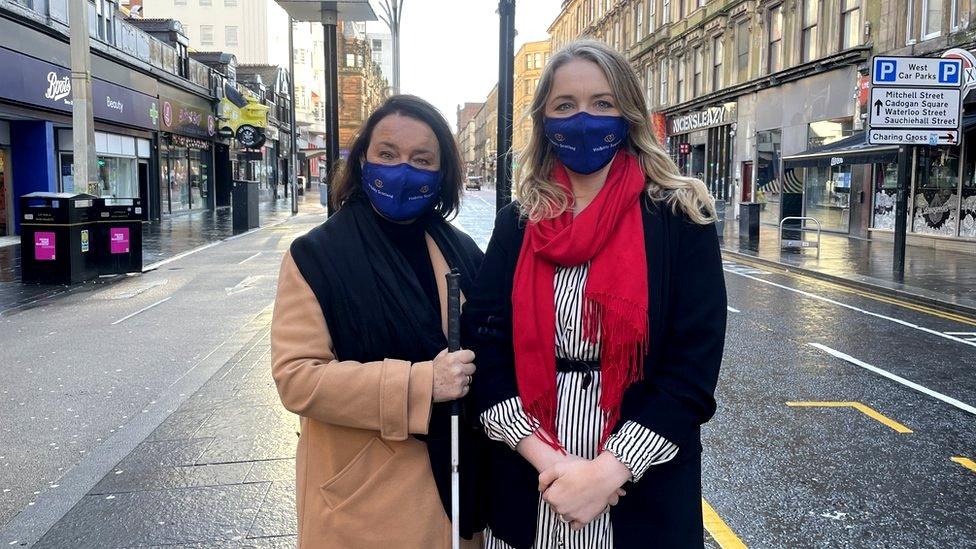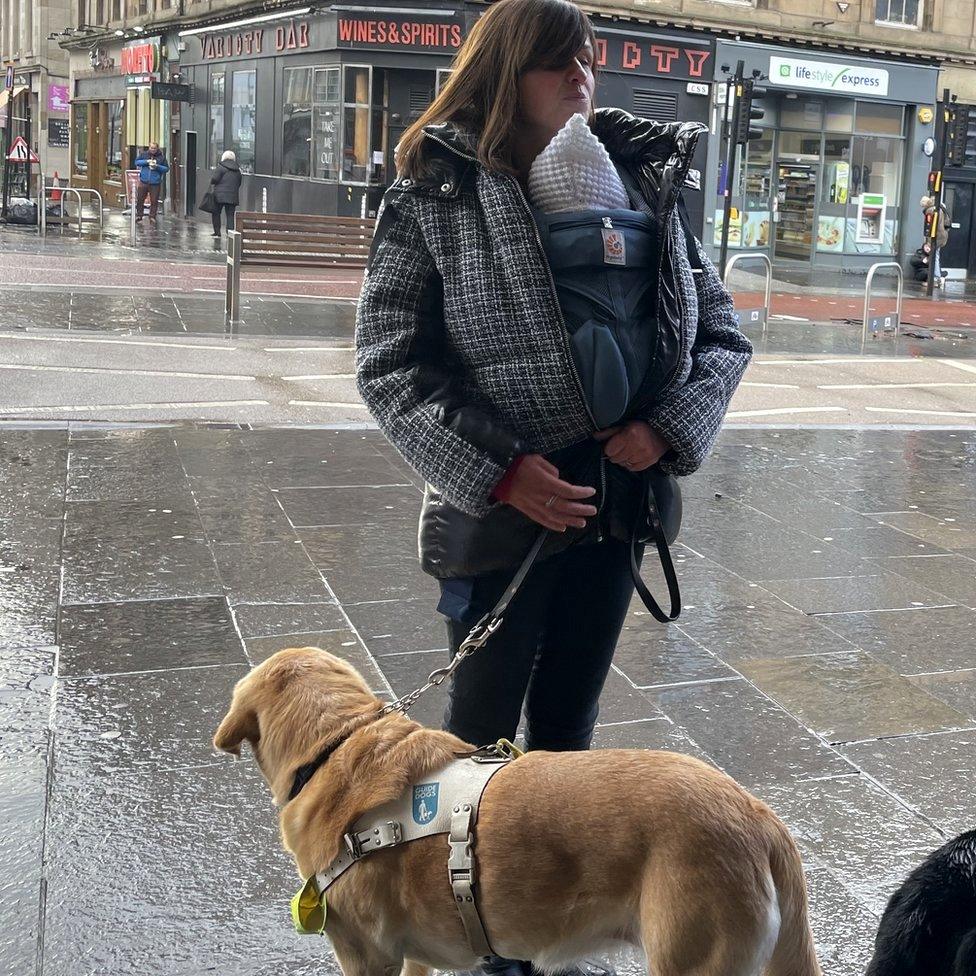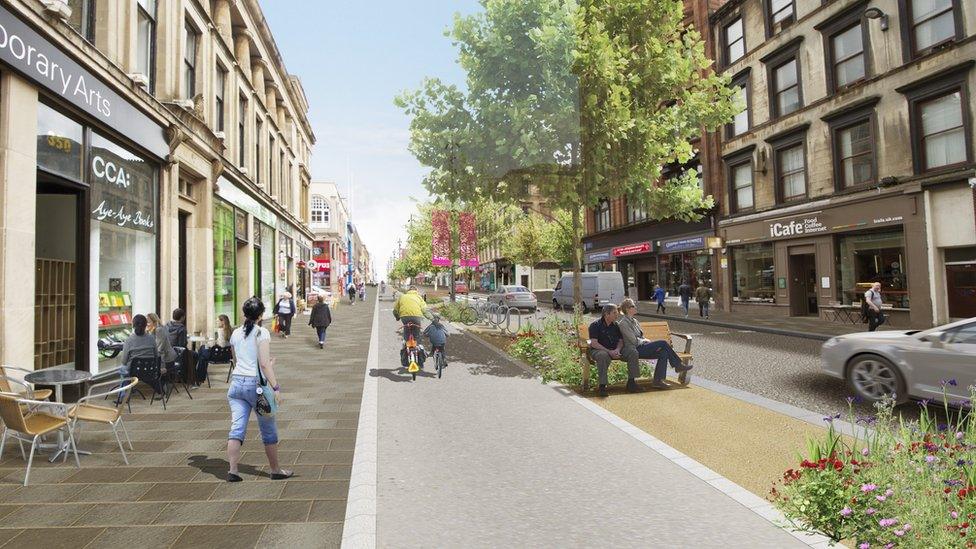New street layout in Glasgow is dangerous, say blind people
- Published

Audrey Ward (left) on Sauchiehall Street with Laura Walker from Visibility Scotland
A plan to encourage people to walk and cycle more has made parts of Glasgow dangerous and inaccessible for visually-impaired people, it has been claimed.
Sauchiehall Street was the first to be redesigned as part of the Avenues Project.
It aims to make Glasgow a more environmentally-friendly city and will see 17 key streets transformed.
Audrey Ward, who is totally blind and a white cane user, said walking in Sauchiehall Street was now an "absolutely terrifying" experience.
The new layout has seen the expansion of footpaths and cycle lanes but dips between each are very small compared to the usual kerb at the side of road.
This means Audrey can't use her cane to detect where the pavement ends and dual cycle lane begins - meaning she could walk straight into it.
"There's no landmarks, no tactile paving," she told BBC Scotland. "I didn't know when to cross, I couldn't hear cyclists going past.
"I am normally an independent traveller. If I had to come here, I would have to come with a colleague to bring me up Sauchiehall Street."

Emma McElwee says there is nothing on the ground to distinguish between the bike lane and the road
Guide dog user Emma McElwee said she had similar problems.
"There was nothing on the ground to distinguish between the bike lane and the road, so for someone like me who'd be crossing, I could have basically just went into the cycle lane and if there were a bike coming I wouldn't have been able to hear it," she said.
Because her guide dog is looking for kerbs to let Emma know when they've reached the pavement edge, she has no way of knowing when she's on a potentially dangerous path. As a result, she said she wouldn't be able to do that route without another person.
She said: "It's a funny message to send when everyone else has been told to be getting active and walking more and getting out and about.
"For someone in my position, that would put me off doing it and I'd be relying on taxis, so it's kind of the opposite."
'Aesthetically pleasing'
Laura Walker, the chief executive of Visibility Scotland and a trained mobility officer, said Glasgow City Council was not properly listening to the concerns raised by many disabled people.
"This is an area that is not safe for anybody with a sensory impairment," she said.
"The needs have just not been taken into consideration and I don't know how somebody could do this independently,"
Laura does not believe she could train someone to walk the route safely, and claimed the council "changed a space to look aesthetically pleasing" at the expense of "robbing people of their independence".
She said: "How do you get home, or how do you get into the town if you can't find the bus stop, or indeed cross the road?"
When asked by BBC Scotland to address the concerns of disabled groups about the Sauchiehall Street design, Glasgow City Council said a "high standard was imbedded in relation to inclusive design", and that they consulted a variety of disability organisations.
They said: "The council is in the process of establishing an Accessible and Inclusive Design Forum which will comprise of various organisations who represent users with disability.
"This forum will focus more on live designs and will give members an opportunity to inform the designs of all Glasgow-specific infrastructure projects."
Related topics
- Published2 November 2017
